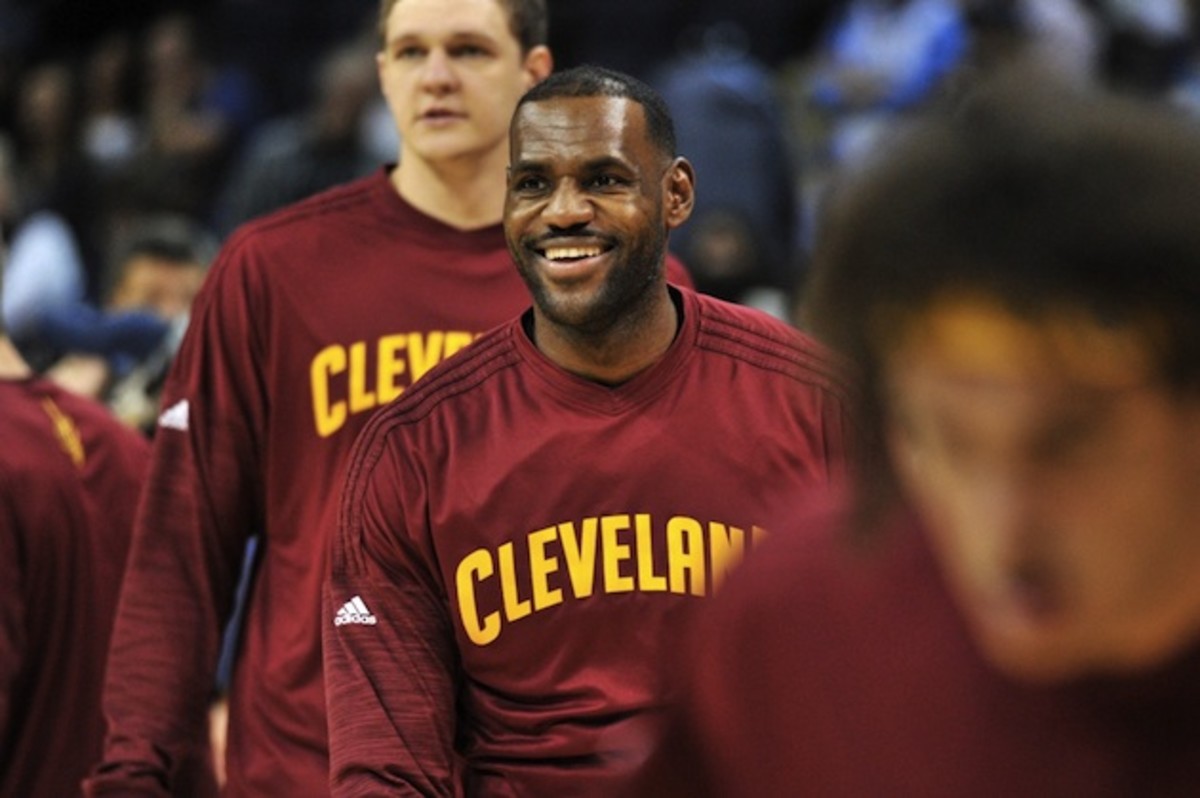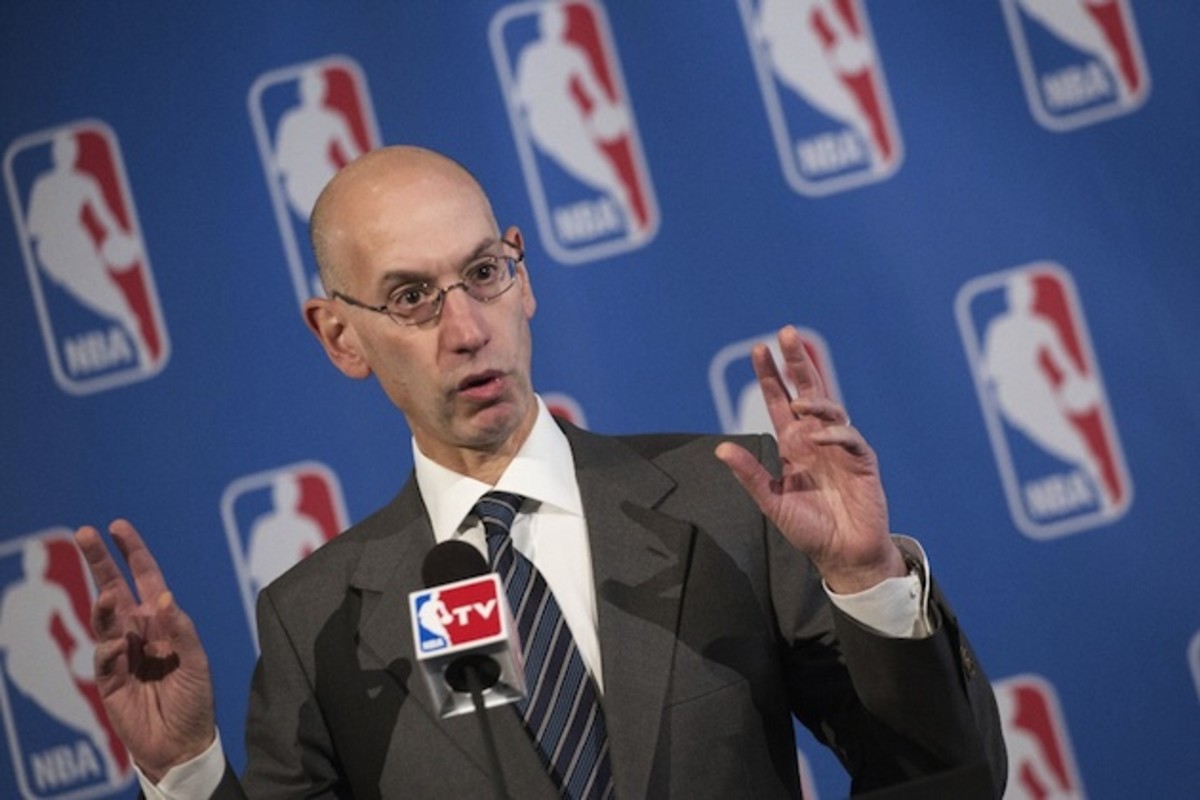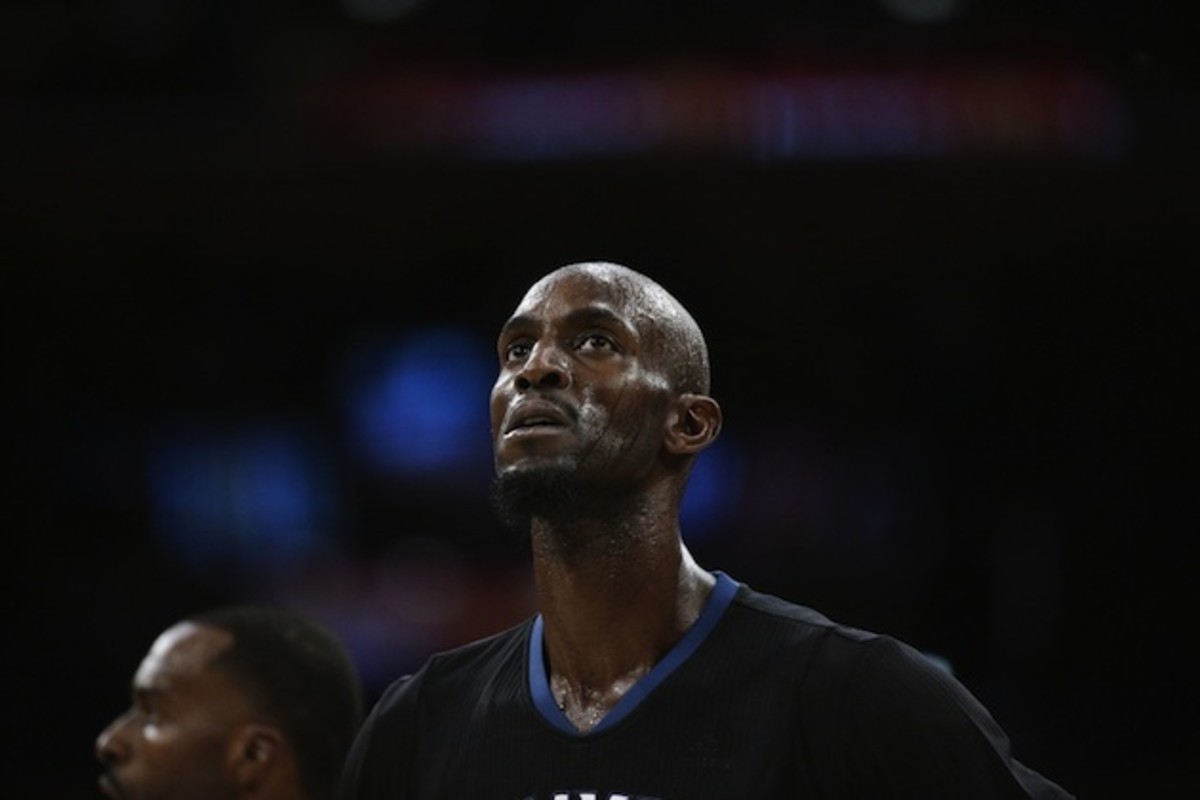The Loyalty Exception: Solving the NBA’s max-contract conundrum

Imagine if J.K. Rowling’s publishers set a limit on the royalties she could earn each year from Harry Potter sales. Now imagine she could only earn royalties while actively writing more books. Sure, Rowling could still monetize the Harry Potter brand through a lucrative film deal and other ventures, but she would likely lose out on untold millions to Bloomsbury Publishing.
This is the financial reality for LeBron James, whose return to the Cleveland Cavaliers last year nearly doubled the team’s value overnight. James is a prime example of someone who has made a ludicrous amount of money, while still being ludicrously underpaid due to the NBA’s max contract system.
The problems with max contracts in the NBA are well documented. In essence, the clause was designed to establish a more robust middle class, while protecting owners from handing out franchise-crippling contracts. However, because a generational talent like LeBron disproportionately impacts the outcome of basketball games and, by extension, his team’s financial outlook, such a re-distributive salary structure drastically underpays them compared to what they’d get in a less regulated system.
While this sounds like the most first-world-y problem of all time, it’s understandable if NBA superstars are upset with the status quo; they are, after all, being screwed out of literally hundreds of millions of dollars. As a result, Chris Paul and LeBron — who also happen to be heads of the player’s union — will likely try to negotiate away max contracts when the two sides next negotiate the league’s Collective Bargaining Agreement (“CBA”). That might lead to a work-stoppage, thereby endangering the livelihoods of many non-millionaires, this is a much bigger problem than most are willing to admit.
Of course, diagnosing is much easier than prescribing. The NBA is a multibillion-dollar conglomerate comprised of interrelated moving parts, wherein knocking over even the tiniest domino sends shock waves throughout the entire league. You get rid of max contracts, and you’re effectively taking millions from average players (who don’t have nine-figure shoe deals) so superstars can buy private islands. It would be “fairer”, but not in the best interest of the vast majority of NBA players. Meanwhile, teams fortunate and savvy enough to draft and develop multiple superstars would have to choose between either footing a colossal luxury tax bill or serving as a farm system for the rest of the league.
Removing max contracts would also force more players to choose between optimizing their earning power and a chances at a championship. Still, it’s possible to both admire those who take less money (Tim Duncan) and be okay with those who maximize their earning potential (Kobe Bryant); the moral “goodness” of people’s career decisions is not a zero-sum system. That said, it doesn’t change the fact that, in a world without max contracts, players would still have to prioritize one over the other.
In short, when working within a system predicated on curbing player revenue, any change is liable to shift who gets the raw deal — be it players, owners, or hot-dog vendors. Superstars can easily team up with one another due to their artificially depressed salaries. Despite “super teams” being able to stoke national engagement, this actually hurts local engagement, as most teams realistically have no shot at a meaningful playoff run. While teams being able to sign their own free agents for an extra year incentivizes them staying put, it doesn’t force established superstars to leave a game-changing amount of money on the table if they depart in free agency after their first extension. Since small market teams usually attract marquee free agents by providing superior basketball situations, the ease in which their superstars can leave to join others threatens long-term stability.

On a similar note, NBA commissioner Adam Silver baffled the basketball-watching public at the July Board of Governors meeting when he stated that “a significant number of teams are continuing to lose money and they continue to lose money because their expenses exceed their revenue.” The implication being that, while the NBA is thriving in a “macro” sense — due to its new TV deal, record levels of audience engagement, and continued international penetration — some individual franchises still struggle to generate revenue. While the simple solution seems to be “share revenue better,” increased revenue sharing won’t suddenly fix unprofitable franchises. Just like eliminating max contracts won’t change the constricting nature of the salary cap.
Being that the upcoming salary cap explosions are tethered to the league’s projected basketball related income (BRI), it’s possible that for some teams, “this escalation of the salary cap is going to put them on a treadmill far too brisk for their fitness level” as ESPN.com’s Kevin Arnovitz so aptly put it. Superstars can make even the smallest market teams very profitable, but that only makes losing one all the more catastrophic.
Much as eliminating max contracts would render “profitability” and “competitive success” somewhat mutually exclusive for players, the rising salary cap might eventually send the price of competing too high for a number of NBA teams. However, what if it were possible to kill two birds with one stone? While the concept of players being capable of making more money seems incongruous with owners saving money, perhaps a heavily regulated circumvention of the salary cap would allow teams to protect their competitive and financial interests precisely by being able to pay their own players more.
Think of it as a second salary cap for each team (determined by their BRI) which can be employed to either augment or partly absorb their players’ salaries based on how many years they’ve played for them.
Here, then, is my attempt at finding a solution to these problems.
The Loyalty Exception

- Following each league year’s July moratorium, teams may pay their players a maximum x% of their BRI from the previous year through the Loyalty Exception without it counting against the salary cap, provided a player being paid has played at least six consecutive seasons with the team. Obviously, the use of variables is vague and sub-optimal. Still,rather than merely guesstimate specific figures, it would be better to create somewhat of a blueprint that gets the spirit of the idea across.
- Individual players may only receive y% of their team’s BRI through the Loyalty Exception with y increasing by z every three years until after a player’s twelfth consecutive season with the team.
- The total amount of money a player received from a) his base salary and b) the Loyalty Exception may not exceed 130% of the base salary salary. So, for example, if Kevin Durant earns $40 million in salary during the 2016–17 NBA season, he may not be paid more than an additional $12 million through the Loyalty Exception.
- Beginning with a player’s thirteenth consecutive season with the same team, the team may forgo a normal application of the Loyalty Exception and instead choose to pay up to 50% of a player’s salary through the Loyalty Exception. For instance, the Miami Heat could pay up to $10 million of Dwyane Wade’s $20 million salary this season (meaning only $10 million of his salary would count against the cap) through the Loyalty Exception, as he will have played twelve consecutive seasons under contract with the Miami Heat.
- If a player is traded to another team, the receiving team may choose to pay the player as if he’d tallied a maximum of three consecutive seasons with them (provided the player has played in the league for at least three years).
- If a player leaves a team via free agency and returns at a point later in his career, it is at the team’s discretion to determine how many years apply to the Loyalty Exception (provided it is not more years than the player originally played on the team. So, if the Loyalty Exception existed when LeBron James returned to the Cleveland Cavaliers, the Cavs would've had the option of treating James as having played up to seven consecutive years on the team.
Loyalty Exception FAQ

Q: Why wait until after the July moratorium to be able to pay players through the Loyalty Exception?
A: Bookkeeping purposes; the league finalizes the past season’s financial numbers during the moratorium. Being that the Loyalty Exception pays players based on their team’s BRI, teams need to actually know what their basketball related income was before they can figure out how much to pay them.
Q: Why escalate how much money players can earn through the Loyalty Exception every three years?
A: It further incentivizes players to stay with the same team for a long time. Additionally, since player earnings through the Loyalty Exception are directly tethered to their team’s BRI, it also incentivizes them to help their team thrive competitively and financially over the course of their careers.
Q: If I’m a team owner, why would I want to cut further into my profits to pay players?
A: If your team employs the type of superstar you feel is under-served by max contracts, you’re virtually guaranteed to sell out your home games, host home playoff games, and have a regular national TV presence. As a result, the extra money you would give to these players still pales in comparison to the amount of revenue they generate for your franchise. However, the flip side to this is that if a superstar leaves your team, and you’re from a small market, it could ruin your franchise. The Loyalty Exception enables you to pay these players much more than any other team in the league can.
Additionally, if you build a great roster over several years and find you’re about to be buried in luxury-tax penalties, the Loyalty Exception will enable you to negotiate contracts with your players. So while you may pay them less in terms of normal salary (meaning a less punitive tax payment), they wind up making the same total amount. While you would still be spending a decent amount on player salaries, the Loyalty Exception gives you a chance to more easily — and more affordably — keep your team’s core together.
Q: If I’m a player, why should I have to stay with the same team for (practically) my entire career in order to maximize my earnings?
A: In a free market you wouldn’t, but it’s unrealistic to ever expect the NBA to get rid of the salary cap. The Loyalty Exception enables you to earn closer to your market value while also incentivizing you to help your team grow competitively and financially over the course of your career.
Q: If I’m a small market team owner, doesn’t this allow big market teams to pay their stars more than I can through the Loyalty Exception?
A: Yes, but if a superstar leaves a small market halfway through their prime to go to a big market, it’s highly unlikely that they’ll spend enough consecutive years with their new team to make more money through the Loyalty Exception than they would had they stayed with their original team. Additionally, by capping the amount an individual player can earn from both the Loyalty Exception and their normal salary at 130% of their normal salary, big market teams can’t abuse an insurmountably large income differential.
Q: If I’m the owner of a financially thriving franchise, how can I take advantage of my relative success through the Loyalty Exception?
A: Being that, at this stage of his career, Kobe Bryant “deserves” $25 million more because of legacy and “brand” than actual basketball impact, the Lakers could use the Loyalty Exception to pay half of his salary and thus only incur a $12.5 million cap hit. In this scenario, both Kobe and the Lakers would benefit financially without sacrificing the team’s ability to put a competitive team on the floor.
Q: If my team is losing money and I can’t afford to pay my superstar players through the Loyalty Exception, how does it benefit me?
A: If you get a superstar (by far the most difficult aspect of roster construction), and your team isn’t competitive after a while or you’re still losing money in that player’s prime, I think incompetent management practices might be the real problem.
Q: If my team isn’t competitive and we don’t have superstars, doesn’t the Loyalty Exception make it even harder for us to get those players?
A: Considering the NBA uses the draft to incentivize losing, it’s not a bad thing to reward successful management practices.
Q: Why allow traded players to start with up to three years that can be counted by the Loyalty Exception?
A: If a player is traded in the early or middle part of their career, they won’t have an incentive to stick with their new team (beyond existing CBA stipulations) if they never feel like they could benefit from the Loyalty Exception. On the flip side, this is capped at three years so teams that assemble super-rosters predominantly through trades can’t dodge the luxury tax.
Q: If a major goal of the Loyalty Exception is to reward a player staying with the team that drafted him, why allow teams to reward their returning free agents?
A: See: James, LeBron. It can also help teams like the Minnesota Timberwolves bring back aging veterans like Kevin Garnett.
Q: If the Knicks and Lakers make significantly more money each year than the Hornets and Pistons, yet can pay the same percentage of their BRI through the Loyalty Exception, won’t this further widen the revenue gap?
A: It’s entirely possible that it might be better to have different BRI brackets that attempt to smooth the differential between low and high-income teams with respect to employing the Loyalty Exception. I’m honestly quite torn on it. However, because the amount that teams contribute to revenue sharing is based on profits, and teams that use the Loyalty Exception to dodge the luxury tax will profit more, a fixed percentage probably wouldn’t create an insurmountable advantage for large market teams.

